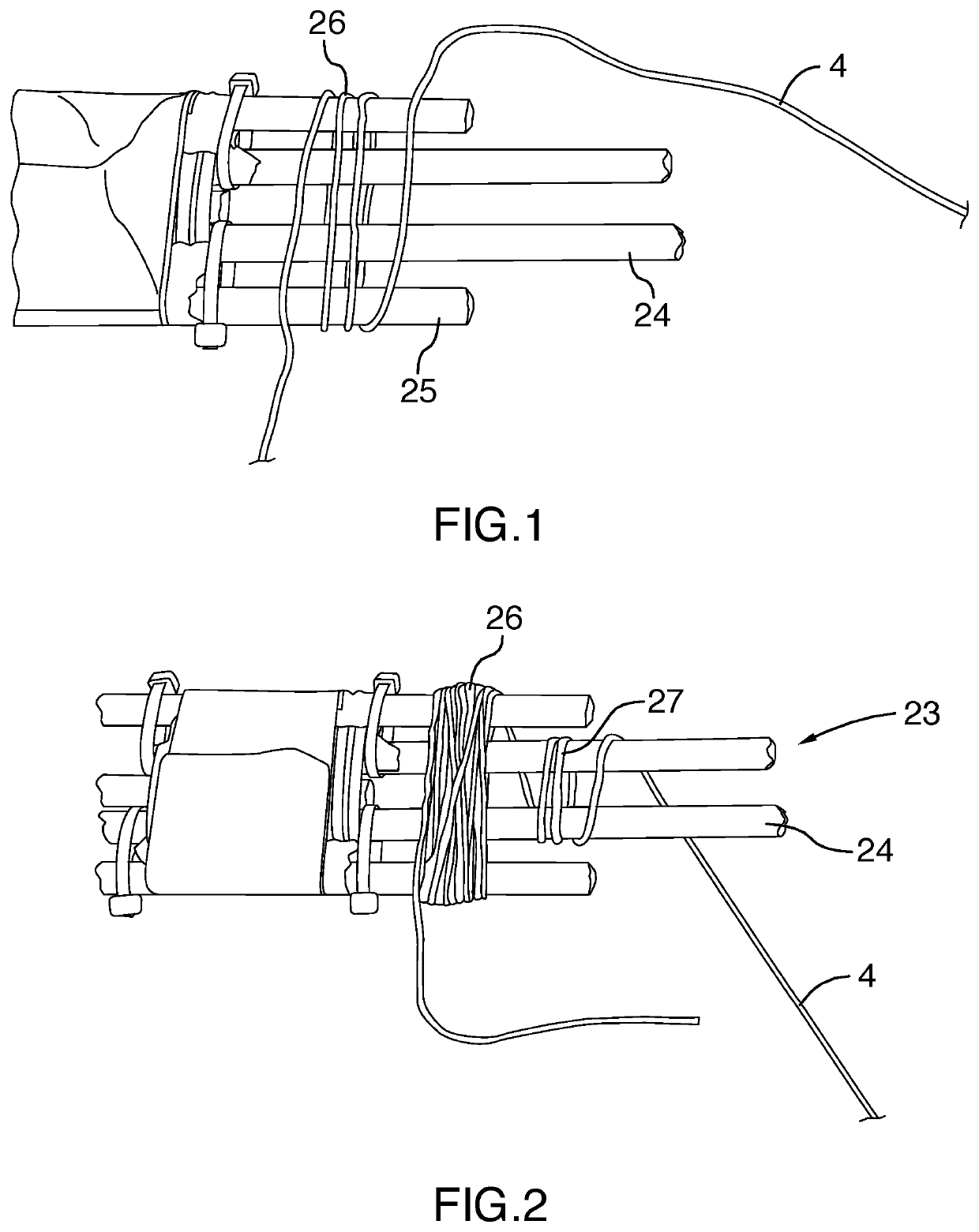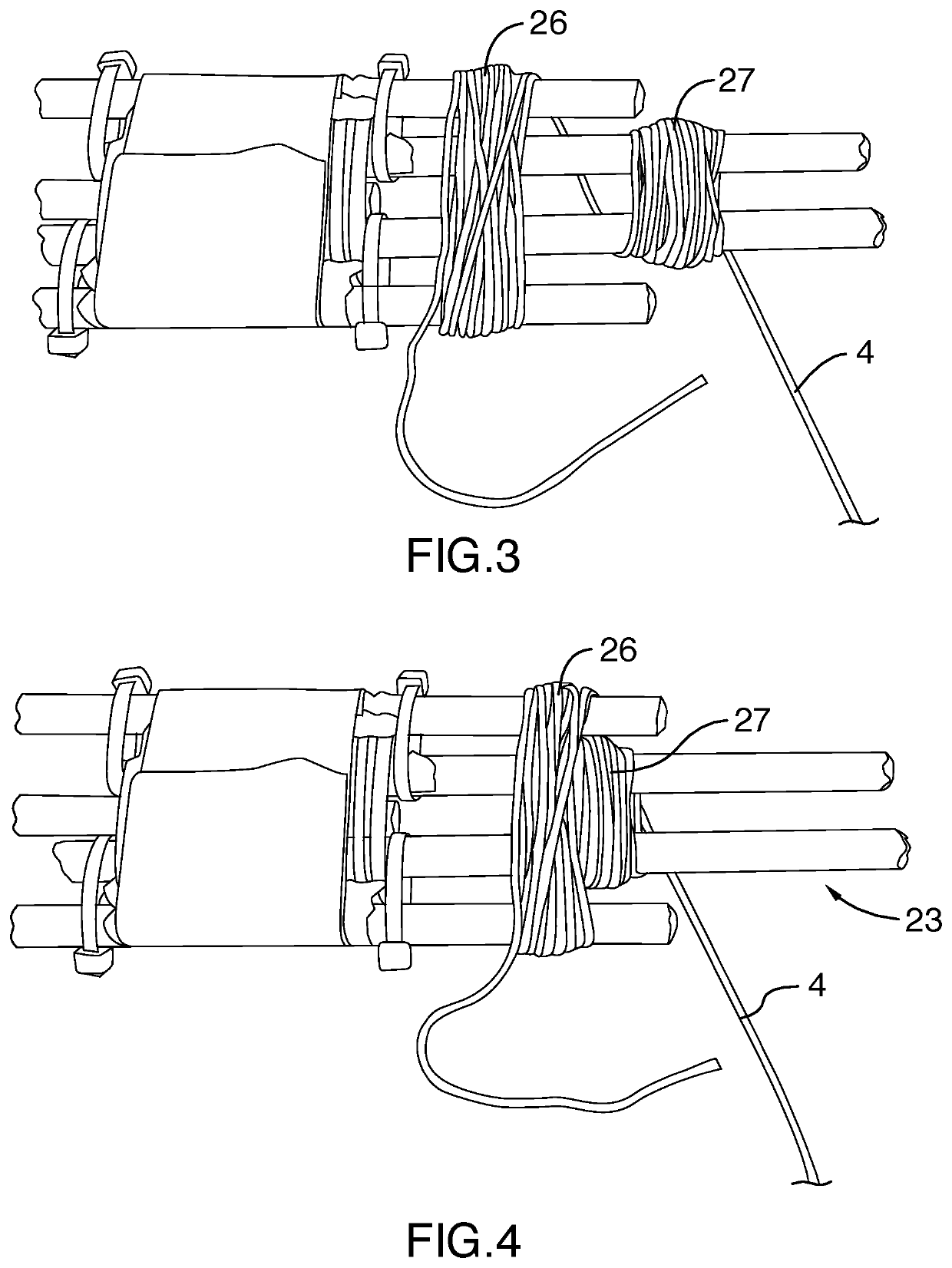Method of producing an aerial projectile for racket sport training/practice or amusement purposes
a technology for aerial projectiles and rackets, applied in racket sports, textiles and paper, ornamental textile articles, etc., can solve the problems of difficulty in practicing an isolated movement by one's self, needing special equipment, and requiring specialized equipment, so as to achieve optimal baffling and rebounding characteristics
- Summary
- Abstract
- Description
- Claims
- Application Information
AI Technical Summary
Benefits of technology
Problems solved by technology
Method used
Image
Examples
Embodiment Construction
[0040]Embodiments of the present invention are directed to a ball-shaped amusement / practice / training projectile comprising a combination of bounce elements and baffling elements, fused or fastened together, as well as a method of fabricating such projectile.
[0041]With reference to the finished projectile shown in FIGS. 20 and 21, the bounce element in this particular embodiment comprises a plurality of intact loops that radiate from a central core of the ball, where these loops are bundled together in a cinched fashion.
[0042]The loops may vary in quantity between a small plurality or large plurality, for example ranging in number from 2 to 10,000 some embodiments, and more particularly between 2 and 400 loops in other embodiments. The intact loops contribute to the resulting density and bounce of the projectile. These intact loops are formed to create higher density areas in the projectile relative to the less dense baffling elements described herein further below. Embodiments with ...
PUM
 Login to View More
Login to View More Abstract
Description
Claims
Application Information
 Login to View More
Login to View More - R&D
- Intellectual Property
- Life Sciences
- Materials
- Tech Scout
- Unparalleled Data Quality
- Higher Quality Content
- 60% Fewer Hallucinations
Browse by: Latest US Patents, China's latest patents, Technical Efficacy Thesaurus, Application Domain, Technology Topic, Popular Technical Reports.
© 2025 PatSnap. All rights reserved.Legal|Privacy policy|Modern Slavery Act Transparency Statement|Sitemap|About US| Contact US: help@patsnap.com



